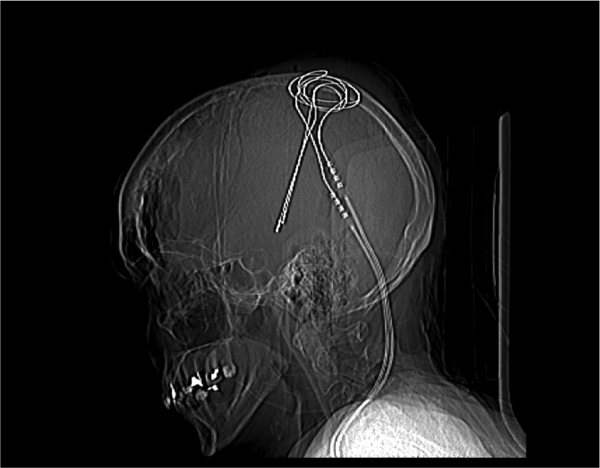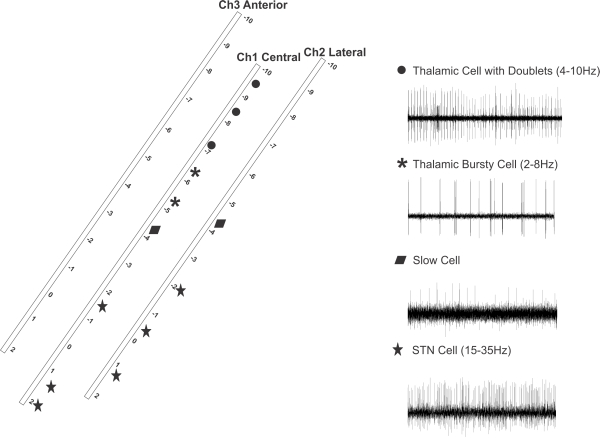Session Information
Date: Monday, June 20, 2016
Session Title: Surgical therapy: Parkinson's disease
Session Time: 12:30pm-2:00pm
Location: Exhibit Hall located in Hall B, Level 2
Objective: To report our experience with an alternative entry point to access STN in the treatment of Parkinson’s disease (PD) and its micro-electrodes findings.
Background: DBS is a largely known therapy for movements disorders, its indications and uses are increasing. Worldwide the frontal insertion point is the “standard” approach to STN DBS implantation, however no alternative entry point is widely known for STN DBS. An alternative entry is needed when there is the risk of complication associated to frontal approach, such infection, which is one of the major complications associated to DBS.
Methods: We present two patients with PD who received STN bilateral DBS treatment which required hardware removal on frontal approach due to surgical site infections. During a re-implantation surgery after proper treatment, we inserted bilaterally the DBS system using a parietal insertion point, posterior to the central gyrus  .
.
Results: Anatomically this approach provides better access to the STN motor portion. Microelectrode recordings yielded approximately 3 mm STN span, preceded by thalamic cells and brief silent. Interestingly, a silent period was observed within STN, we believe this is the place left by the previous DBS electrode, since no lesion was observed in the MRi  . Clinically, the patient presented similar results from both insertion points and no major challenged was faced during the surgery. A parietal approach has proven to be a safe and reliable alternative to frontal insertion point.
. Clinically, the patient presented similar results from both insertion points and no major challenged was faced during the surgery. A parietal approach has proven to be a safe and reliable alternative to frontal insertion point.
Conclusions: Here, we present two patients with DBS infection which required complete hardware removal to obtain complete infection control. After the complete recovery the patient underwent a second DBS implantation on an alternative approach, by the parietal DBS insertion. UPDRS scores show similar clinical results to those obtained by frontal approach, showing that the parietal via might prove to be a safe alternative to frontal insertion.The microelectrodes recordings reveals a reliable STN identification for ideal DBS placement. The results are similar to the usual frontal insertion point, with identification of STN’s borders. Interestingly, we noted a bilateral silence within STN, which is believed to be the space left by the previously DBS.
To cite this abstract in AMA style:
W.O. Contreras Lopez, L. Batista, A. Azevedo, M.J. Teixeira, E.T. Fonoff. Effectiveness and micro-electrodes findings of deep brain stimulation of the STN via a parietal approach in post-infectious previously implanted Parkinson´s patients [abstract]. Mov Disord. 2016; 31 (suppl 2). https://www.mdsabstracts.org/abstract/effectiveness-and-micro-electrodes-findings-of-deep-brain-stimulation-of-the-stn-via-a-parietal-approach-in-post-infectious-previously-implanted-parkinsons-patients/. Accessed May 11, 2025.« Back to 2016 International Congress
MDS Abstracts - https://www.mdsabstracts.org/abstract/effectiveness-and-micro-electrodes-findings-of-deep-brain-stimulation-of-the-stn-via-a-parietal-approach-in-post-infectious-previously-implanted-parkinsons-patients/
